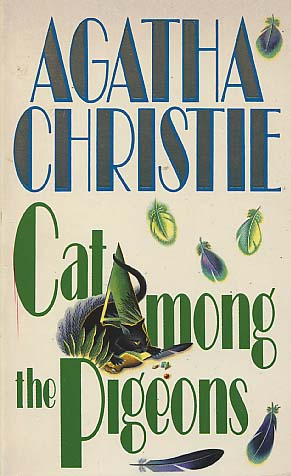The first book I read in November was
The Rule of Four by Ian Caldwell and Dustin Thomason. It's a bibliomystery and is about two friends at Princeton trying to figure out the codes and secrets held in a mysterious Renaissance book, the
Hypnerotomachia Poliphilli (
which is real!). Murders start happening, and they start searching for clues for those too. They have to find all the answers before their dissertation is stolen or they're kicked out of Princeton. Read the official
synopsis here.
The authors are two best friends who also both went to Princeton, so the setting felt real and lived in. The characters felt a bit stiff and formal, more like adults in their late twenties and early thirties than college students, but I was invested in them and their friendships. This may be because the book is set in 1999, but I don't think that would make the characters more mature. I liked the friendships between the four young men. I liked how Tom and Paul's friends helped with the riddles and clues; their med student friend helped with the medicine stuff, and Tom's girlfriend helped with riddles that had to do with her own major. The plot with the Tom and his girlfriend Katie was interesting enough, and she did feel mostly like a fleshed-out character, but I would have rather spent more time with the book.
The HP incunabulum and its history was my favorite part, of course; there were so many things that I learned about in rare books classes (Aldus Manutius!) and things about Italian renaissance history, science and art (Florence! the Bonfire of the Vanities!). The cryptology stuff was fascinating, with hidden messages encoded in the text which contained riddles, with the numerical code to the next riddle contained in each answer. The rule of four refers to the last numeric code needed to detect the book's hidden messages. One riddle had to do with who gave Moses his horns, which Paul did not get immediately. I call bull on this; everyone who tangentially knows anything about renaissance art and the Bible knows that Moses has horns in Michelangelo's statue of him because of a mistranslation (rays and horns being the same word). Paul, who knows Italian and Latin and basically everything there is to know about Renaissance Italy and its art, history, you name it, would have picked up on this right away. Paul says in the book that Michelangelo (or Jerome?) depicted Moses with horns because he felt only God should have glory radiating from His face, but I don't think that's true.
The Hypnerotomachia Poliphilli wove its way through Tom and Paul's lives and the lives of Tom's father and his friends, who became Paul's advisors and mentors. The HP was a source of life-long obsession to these men, and it impacted their relationships with their partners and each other. Tom's father being obsessed with the HP damaged his relationship with his wife and son, while Tom's obsession with the HP strained his relationship with his girlfriend. Tom's father and his friends echoed Tom and his friends. This book deals with loss, obsession, academia, friendship, depression, relationships, and more. It was very sad but very fascinating. I loved the HP parts but I don't think I'll reread or keep this one. It stayed with me for a while.
Score: 3.5 out of 5 stars
Read in: November 2-3
From: the thrift store?
Format: paperback
Status: giving away
Trigger warnings for this book: murder, death (various methods, some of them violent), car crash, blood, semi-graphic major injury, other injuries requiring hospital stays, alcohol overuse, obsession, depression, sex, mentioned nudity, sexism/misogyny, privileged Princeton pigs




